Vegetable Biryani recipe is a true crowd-pleaser! Packed with fragrant basmati rice, vibrant veggies, and a blend of spices, it's both aromatic and delicious. Not only does it taste amazing, but it’s a perfect way to nourish your body with essential nutrients! Ready to dive into this tasty dish?
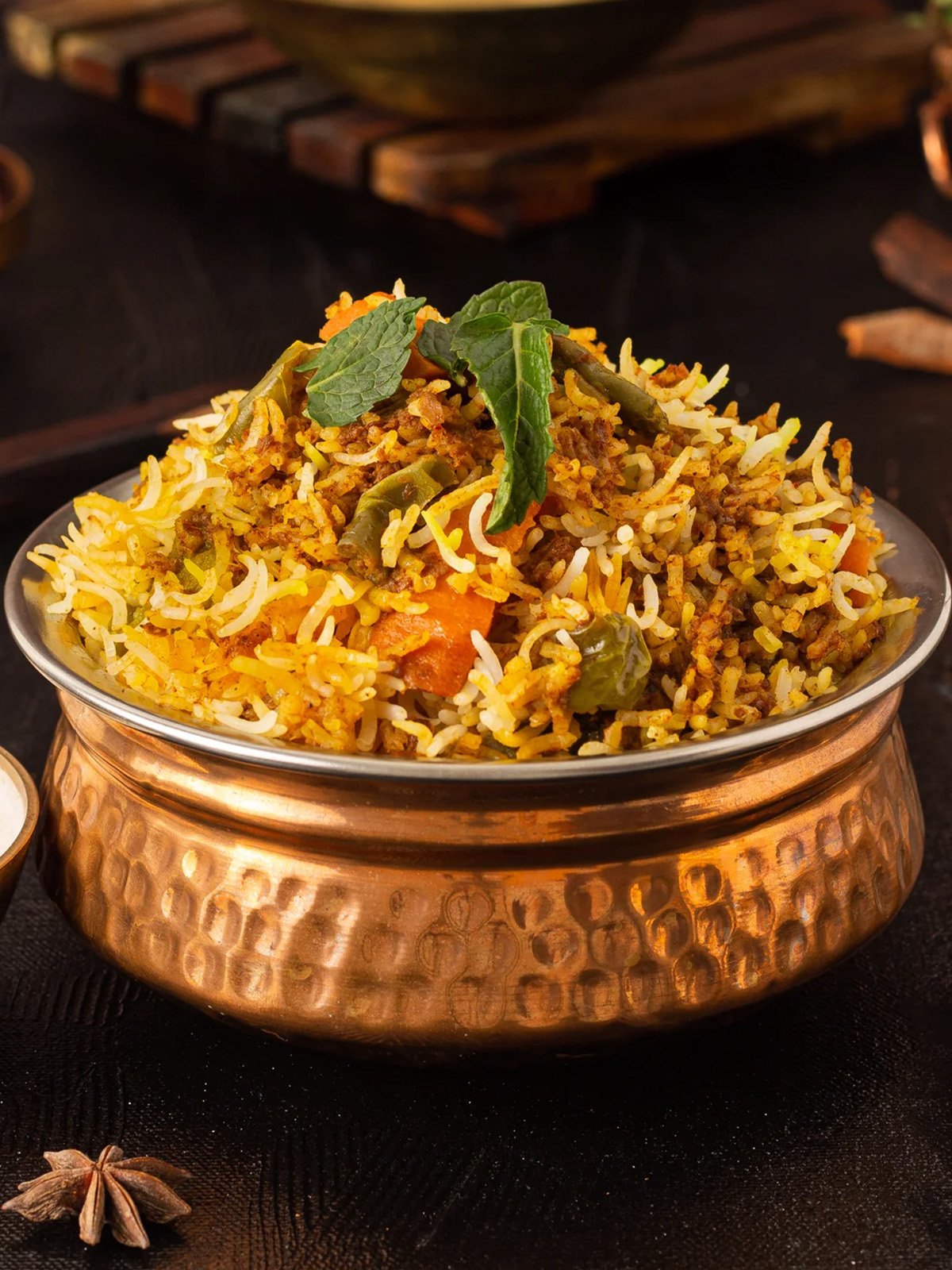
Jump to:
- About Vegetable Biryani
- What is Vegetable Biryani?
- Pick the Right Rice for Biryani
- Health Benefits of Vegetable Biryani
- What You'll Need to Make This Vegetable Biryani?
- How to Make Restaurant Style Vegetable Biryani?
- Serving Suggestions & Pairing Ideas
- Unique Twists on Classic Vegetable Biryani
- Tips for Making the Best Vegetable Biryani
- Creative Garnishing Ideas for Biryani
- ❔FAQs
About Vegetable Biryani
Biryani, a flavorful rice dish, originated in the royal kitchens of the Mughals in India. Not only did it start as a meat-based dish, but over time, it evolved into the beloved Vegetable Biryani, offering a delicious vegetarian twist!
Regional Variations
- Hyderabadi Vegetable Biryani: Famous for its curd (yogurt) marinade, making it extra rich and flavorful.
- Lucknowi Vegetable Biryani: Known for its mild spices and delicate aromas from kewra water.
- Kolkata Style Vegetable Biryani: Light, with soft potatoes and a less spicy profile.
- South Indian Vegetable Biryani: Packed with coconut, curry leaves, and mustard seeds for a tangy punch!
From the Middle East to Southeast Asia, Vegetable Biryani has become a worldwide favorite recipe! Whether served in a Western café or a traditional Asian feast, it continues to evolve, making it a timeless, global dish.
What is Vegetable Biryani?
Vegetable Biryani recipe is a hearty and aromatic dish, packed with fluffy rice, colorful veggies, fragrant spices, and a touch of saffron.
It’s not only a hit in India but has also spread worldwide, becoming a staple in many cuisines!
Vegetable Biryani is delicious and super nutritious recipe! With fiber, vitamins, and minerals from the veggies, carbs from the rice, and healthy fats from ghee or oil, it’s the perfect combo for energy and health.
Whether it's for special occasions like weddings or festivals like Eid and Diwali, or a quick weeknight dinner for busy families, Vegetable Biryani recipe fits every occasion!
Pick the Right Rice for Biryani
- Firstly, when choosing rice for Biryani, Basmati rice is the best choice! Not only does it cook up fluffy and separate, but it also absorbs the flavors of the spices really well.
- Additionally, there are other great varieties like Seeraga Samba, which is popular in South India. In fact, these types of rice are long-grain and fragrant, making your Biryani even more flavorful.
- Equally important, always pick high-quality rice to ensure that it cooks perfectly. Therefore, the right rice makes all the difference!
Health Benefits of Vegetable Biryani
- Balanced Nutrition: Vegetable Biryani gives you a well-rounded meal, packed with carbs, fiber, and vitamins from the veggies. It’s a perfect fuel for your body!
- Antioxidants: Tomatoes, turmeric, and coriander are full of antioxidants, helping to boost your immune system.
- Protein-Packed: Add chickpeas, paneer, or tofu to make your Biryani a tasty, plant-based protein source!
- Customizable for Everyone: Whether you’re vegan, gluten-free, or dairy-free, Vegetable Biryani is easy to adapt for all kinds of diets!
🌟 Craving more deliciousness? 🍴 Try these mouth-watering recipes:
Egg Biryani – A flavorful twist on a classic!
Mutton Biryani – Tender mutton cooked to perfection!
Prawn Biryani – A seafood lover’s dream!
Paneer Pulao – Creamy, cheesy goodness in every bite!
Mushroom Biryani – Earthy mushrooms in a fragrant rice mix!
What You'll Need to Make This Vegetable Biryani?
Key Ingredients:
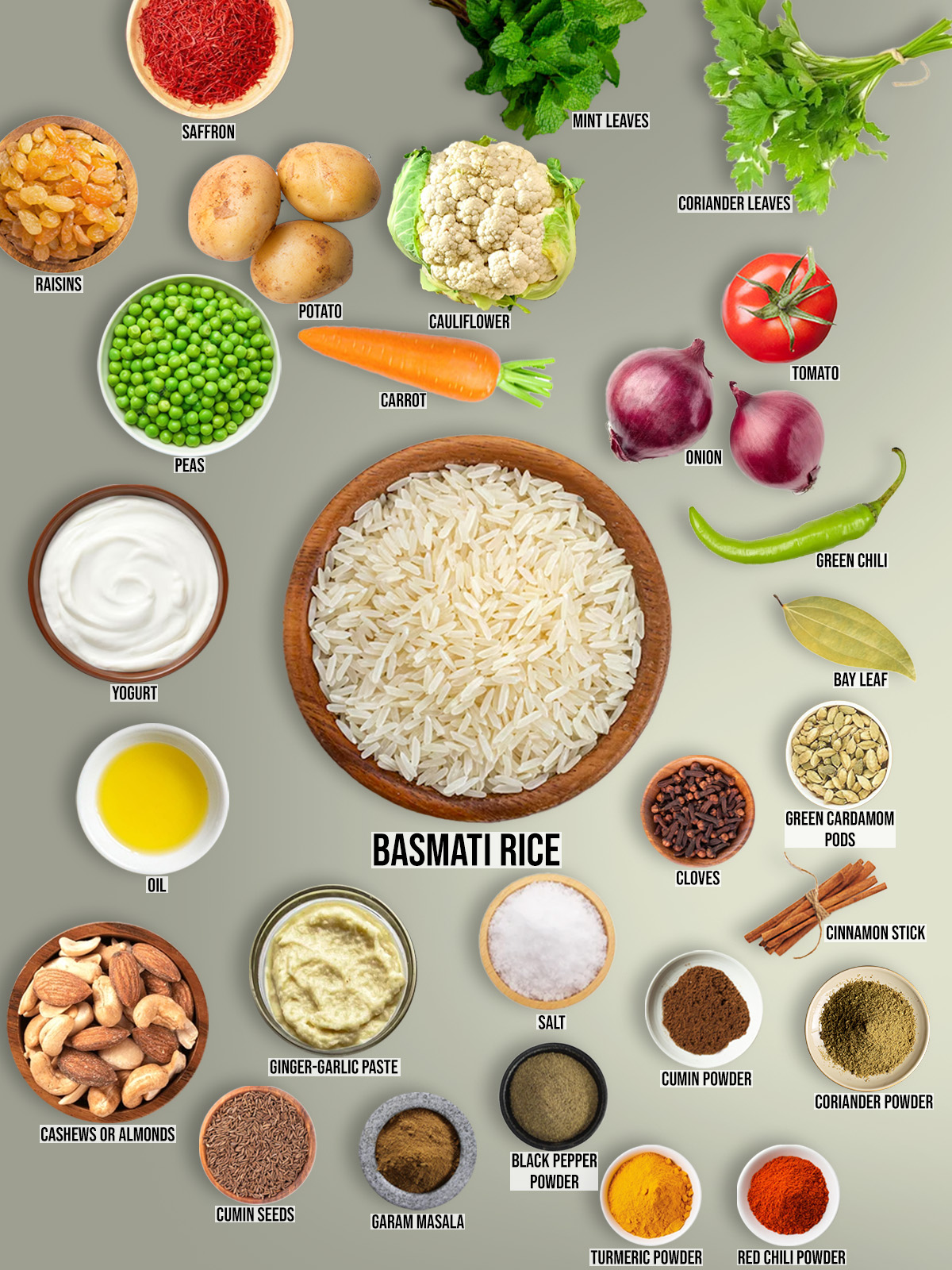
Ingredients Breakdown:
- Rice: Good-quality rice is super important! Basmati or Seeraga Samba are the best. They soak up all the yummy flavors and stay fluffy and separate.
- Veggies: Mix root veggies like carrots and potatoes with leafy greens like beans and cauliflower. This balance makes it delicious and healthy!
- Whole Spices vs. Ground Spices: Whole spices like cinnamon sticks and cardamom pods add deep flavor, while ground spices like cumin and garam masala bring that classic biryani taste!
- Herbs & Garnishes: Fresh mint, coriander, and crispy fried onions give that extra pop of fragrance, flavor, and texture, making your Biryani even more amazing!
How to Make Restaurant Style Vegetable Biryani?
Step by Step Instructions
Preparing the Biryani Base:
- Firstly, heat oil or ghee in a large pan and add whole spices like cinnamon sticks, cardamom, cloves, and bay leaves.
- After that, add finely chopped onions, garlic, and ginger to the pan. Sauté them until the onions turn golden and soft. This step is crucial as it brings out the depth of flavor in the biryani.
Marinating the Vegetables:
- Secondly, in a separate bowl, mix your choice of vegetables (carrots, peas, potatoes, beans, etc.) with yogurt, turmeric, chili powder, and garam masala.
- You can let the vegetables marinate for at least 30 minutes to allow them to soak in the spices properly.
Layering the Biryani:
- Next, cook the rice separately, but make sure it’s slightly undercooked (about 70% cooked). This will help it absorb the flavors when it's layered with the vegetables and spices.
- Then, in a large pot, start the layering process: first, add a layer of rice at the bottom, followed by a layer of the marinated vegetables. Correspondingly, repeat this layering until all the rice and vegetables are used up.
- Furthermore, sprinkle some fried onions, mint, and coriander leaves on each layer to enhance the fragrance and texture of the biryani.
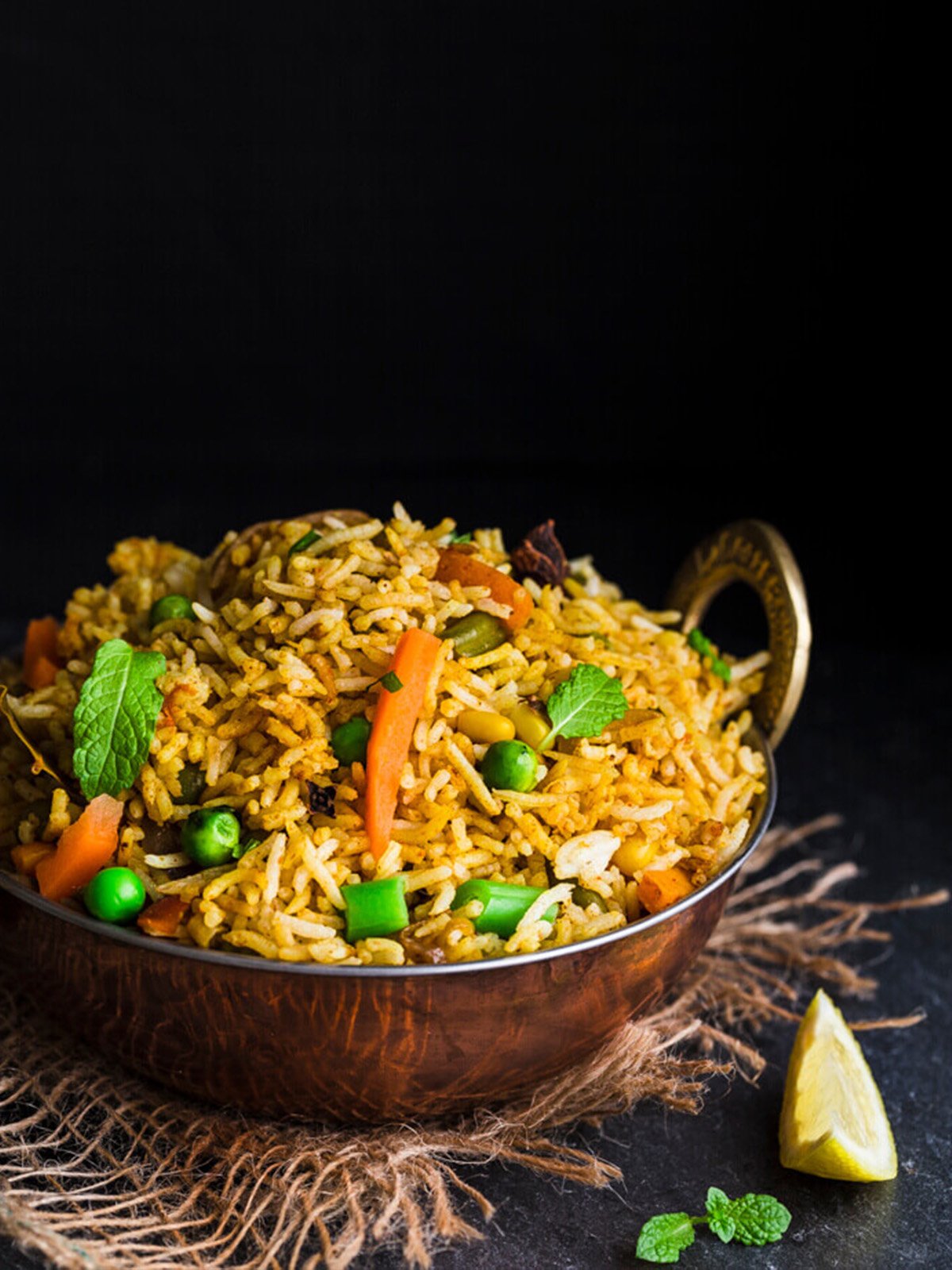
The Dum Cooking Method:
- Afterwards, it's time for the dum cooking method! This involves sealing the pot tightly with a lid or dough so that no steam escapes.
- Simultaneously, place the pot on a low flame and let it cook for 20-30 minutes. This slow cooking process ensures the rice becomes fluffy while absorbing all the delicious spices. As a result, you get perfectly cooked, flavorful biryani!
- Finally, after the biryani is done, let it rest for a few minutes before opening the lid. This helps the flavors settle and makes it easier to serve.
Serve
- Finally, once the biryani is done, gently fluff it with a fork. Garnish with fried cashews, raisins, and fresh coriander leaves. Serve hot with raita, papad, or salad!
Serving Suggestions & Pairing Ideas
- Naan or Paratha: Want a more indulgent meal? Serve the biryani with warm, buttery naan or flaky parathas. These sides make the meal even more delicious!
- Raita Pairing: To cool down the spices, serve your biryani with some raita—like cucumber raita or onion-tomato raita. It balances the heat and adds a refreshing touch!
- Salads: Add a fresh side salad like kachumber or a simple onion-tomato-cucumber mix. These salads are light and give a nice contrast to the rich biryani!
- Pickles & Papad: For extra tang and crunch, pair your biryani with mango pickle, lime pickle, or crispy papad. It’s the perfect burst of flavor!
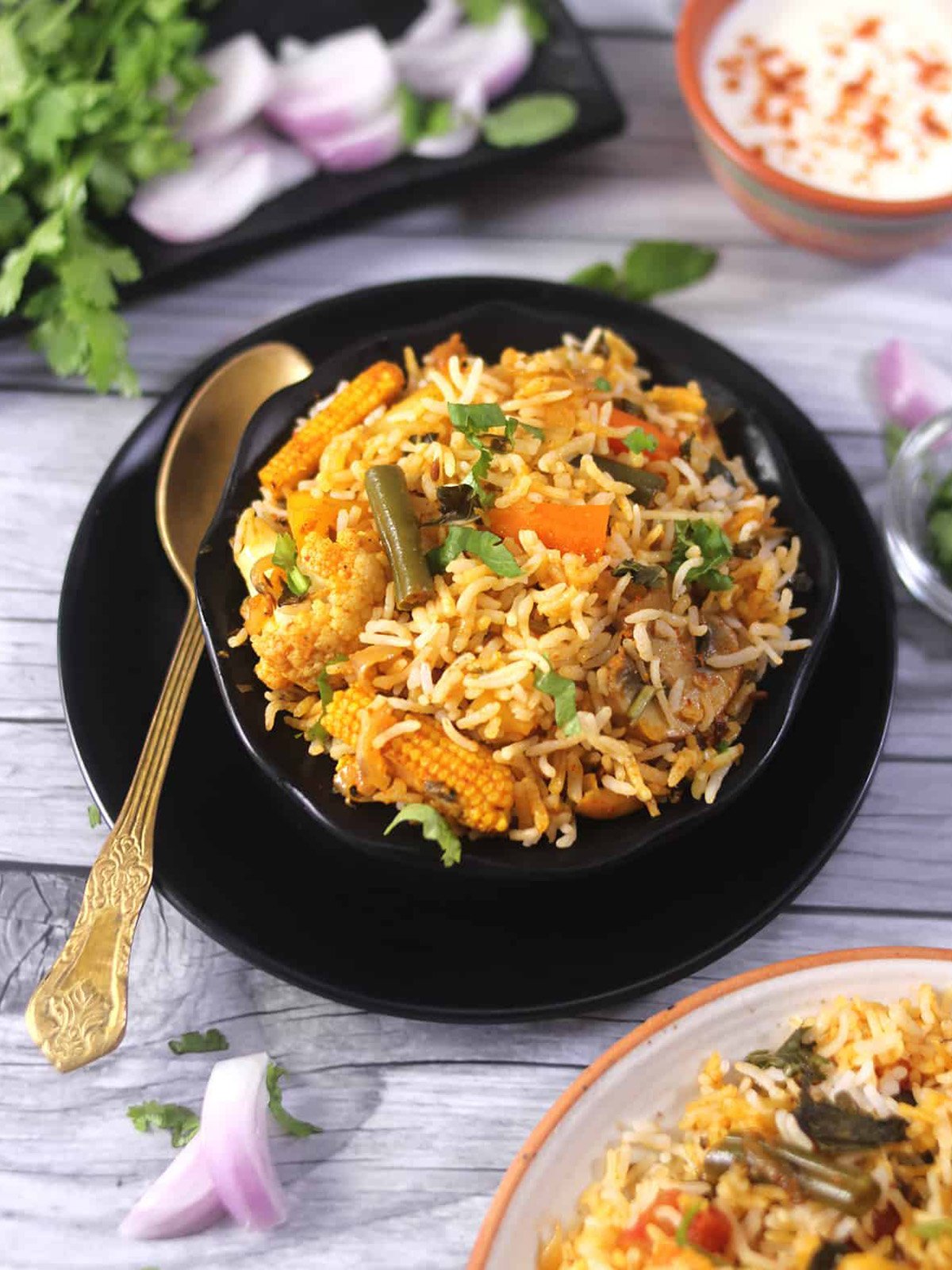
Unique Twists on Classic Vegetable Biryani
- Instant Pot/Pressure Cooker Method: In a rush? You can make Vegetable Biryani super fast with an Instant Pot or pressure cooker! It’s quick, easy, and tastes just as amazing without all the waiting.
- Vegan Version: Want a plant-based twist? Replace ghee with coconut oil and skip the yogurt. You can also swap cashews and milk with plant-based alternatives like almond milk. This way, it's 100% vegan and still super tasty!
- Low-Carb/Healthy Version: Looking for a healthier option? Use cauliflower rice instead of regular rice to make it low-carb or try quinoa or brown rice for a healthier choice. It’s still full of flavor but much lighter!
- Fusion Biryani: Want to get creative? Try a Mexican Vegetable Biryani with black beans, corn, and spicy jalapeños or a Italian twist with zucchini, mushrooms, and basil. It’s biryani but with a global flair!
Tips for Making the Best Vegetable Biryani
1. Rice to Water Ratio: First of all, getting the right rice-to-water ratio is key. For perfect rice texture, use a 1:1.5 or 1:2 ratio (rice to water). This helps avoid mushy rice and ensures each grain stays fluffy and separate.
2. Fried Onions: Don’t forget to add crispy fried onions as a garnish. Not only do they add a nice crunch, but they also bring a hint of sweetness, which enhances the texture and flavor of the biryani.
3. Saffron Infusion: Furthermore, for a rich color and amazing aroma, infuse saffron threads in warm water or milk. Then, drizzle this golden liquid over the biryani before cooking—it’s the secret to a beautiful, fragrant dish!
4. Dum Sealing Tips: Lastly, to ensure the biryani cooks perfectly on "dum" (slow cooking), seal the pot with dough or foil. This traps the steam, locking in all the delicious flavors and making your biryani even tastier!
Creative Garnishing Ideas for Biryani
- Rose Water or Kewra Water: Finally, add a few drops of rose water or kewra water. This gives the biryani a floral aroma and makes it feel extra fancy!
- Pomegranate Seeds: First, sprinkle some pomegranate seeds on top. They add a pop of color and a sweet-tart flavor that makes your biryani extra special!
- Fried Cashews & Raisins: Next, add fried cashews and raisins. These give a rich taste and crunchy texture, making your biryani even more delicious!
- Fresh Herbs: For a fresh touch, garnish with mint leaves and cilantro. They’ll bring a vibrant and cooling flavor to balance out the spices.
Did you try this Vegetable Biryani recipe? Leave a ⭐️⭐️⭐️⭐️⭐️ rating below and share it on Instagram, Facebook, and Pinterest!
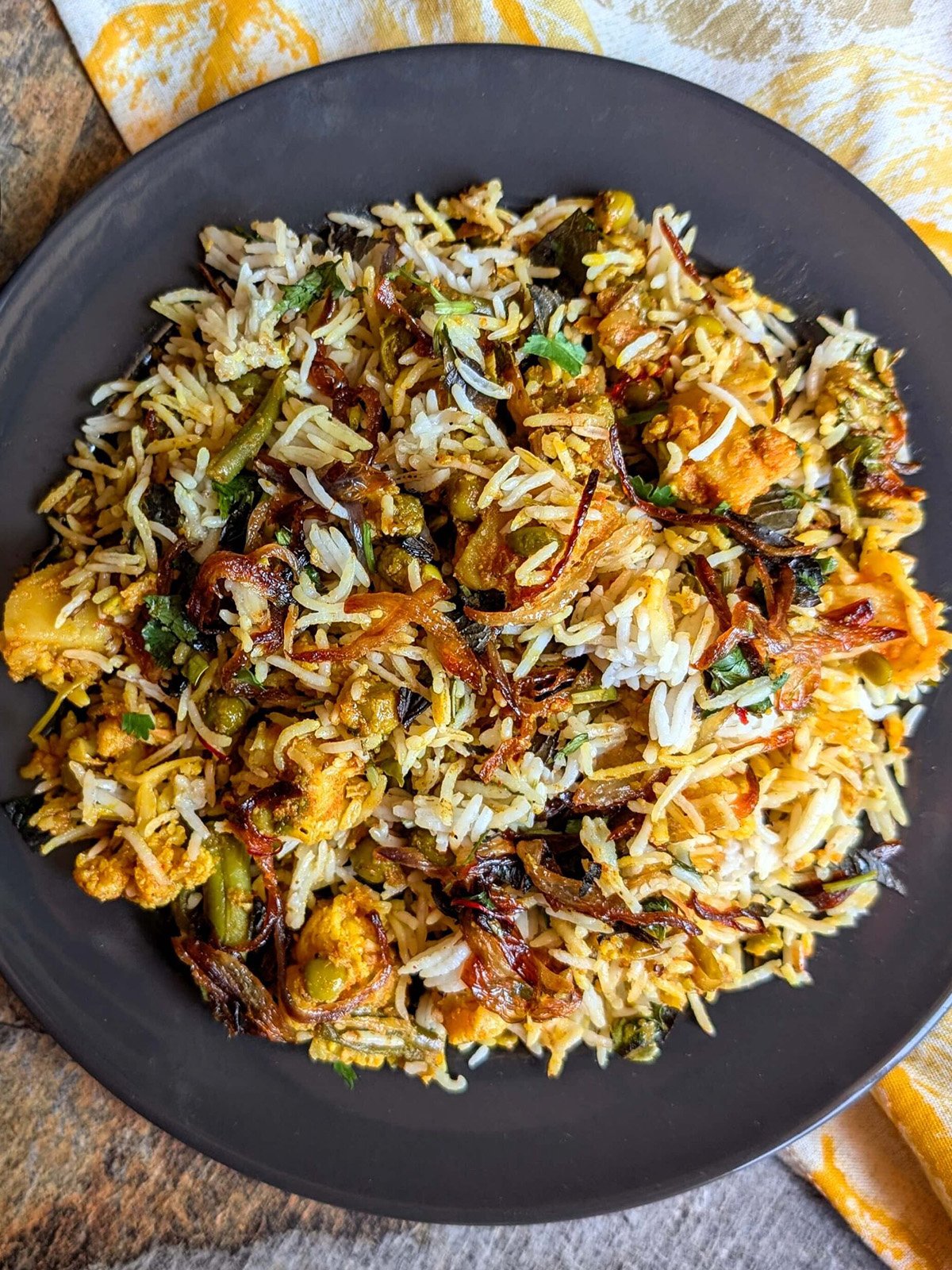
❔FAQs
Sauté onions, garlic, and spices, add vegetables, and layer with partially cooked rice. Cook on low heat until everything is well combined.
Key spices include cumin, coriander, turmeric, garam masala, and whole spices like cinnamon, cardamom, and cloves.
Yes, but brown rice requires a longer cooking time and will have a different texture compared to basmati.
Popular vegetables include potatoes, carrots, peas, bell peppers, and green beans.
Yes, in a slow cooker, cook on low for 3-4 hours. In an Instant Pot, use the "Rice" or "Manual" setting.
Soak saffron threads in warm milk or water and drizzle over the rice before finishing the cooking.
Yes, just make sure they are thawed and drained to avoid excess moisture.
Adjust the amount of chili powder or green chilies to control the spice level according to your preference.

Vegetable Biryani
Ingredients
For Rice:
- 1 ½ Cup Long-grain basmati rice
- 4 Cup Water
- 1 Bay leaf
- 2-3 Green cardamom pods
- 1 Inch cinnamon stick
- 2-3 Cloves
- Salt to taste
For Vegetables:
- 1 Medium potato, diced
- 1 Carrot, diced
- ½ Cup Green peas
- ½ Cup Cauliflower florets
- 1 Medium onion, thinly sliced
- 1 Medium tomato, chopped
- 1 Green chili, slit
- 1 Cup Thick yogurt (curd)
- 2 tablespoon Oil or ghee
- 2 teaspoon Ginger-garlic paste
For Biryani Masala:
- 1 teaspoon Cumin seeds
- 1 teaspoon Coriander powder
- ½ teaspoon Turmeric powder
- 1 teaspoon Garam masala
- 1 teaspoon Biryani masala (optional)
- ½ teaspoon Red chili powder
- 1 teaspoon Cumin powder
- 1 teaspoon Black pepper powder
For Layering:
- 2 tablespoon Fresh coriander leaves, chopped
- 2 tablespoon Fresh mint leaves, chopped
- 1 tablespoon Saffron strands soaked in ¼cup warm milk
- 1 tablespoon Fried onions (optional)
Optional Garnishes:
- Cashews or almonds, fried in ghee
- Raisins, fried in ghee
Instructions
Preparing the Biryani Base:
- Firstly, heat oil or ghee in a large pan and add whole spices like cinnamon sticks, cardamom, cloves, and bay leaves.
- After that, add finely chopped onions, garlic, and ginger to the pan. Sauté them until the onions turn golden and soft. This step is crucial as it brings out the depth of flavor in the biryani.
Marinating the Vegetables:
- Secondly, in a separate bowl, mix your choice of vegetables (carrots, peas, potatoes, beans, etc.) with yogurt, turmeric, chili powder, and garam masala.
- You can let the vegetables marinate for at least 30 minutes to allow them to soak in the spices properly.
Layering the Biryani:
- Next, cook the rice separately, but make sure it’s slightly undercooked (about 70% cooked). This will help it absorb the flavors when it's layered with the vegetables and spices.
- Then, in a large pot, start the layering process: first, add a layer of rice at the bottom, followed by a layer of the marinated vegetables. Correspondingly, repeat this layering until all the rice and vegetables are used up.
- Furthermore, sprinkle some fried onions, mint, and coriander leaves on each layer to enhance the fragrance and texture of the biryani.
The Dum Cooking Method:
- Afterwards, it's time for the dum cooking method! This involves sealing the pot tightly with a lid or dough so that no steam escapes.
- Simultaneously, place the pot on a low flame and let it cook for 20-30 minutes. This slow cooking process ensures the rice becomes fluffy while absorbing all the delicious spices. As a result, you get perfectly cooked, flavorful biryani!
- Finally, after the biryani is done, let it rest for a few minutes before opening the lid. This helps the flavors settle and makes it easier to serve.
Serve
- Finally, once the biryani is done, gently fluff it with a fork. Garnish with fried cashews, raisins, and fresh coriander leaves. Serve hot with raita, papad, or salad!
Notes
Serving Suggestions & Pairing Ideas
-
- Naan or Paratha: Want a more indulgent meal? Serve the biryani with warm, buttery naan or flaky parathas. These sides make the meal even more delicious!
-
- Raita Pairing: To cool down the spices, serve your biryani with some raita—like cucumber raita or onion-tomato raita. It balances the heat and adds a refreshing touch!
-
- Salads: Add a fresh side salad like kachumber or a simple onion-tomato-cucumber mix. These salads are light and give a nice contrast to the rich biryani!
-
- Pickles & Papad: For extra tang and crunch, pair your biryani with mango pickle, lime pickle, or crispy papad. It’s the perfect burst of flavor!













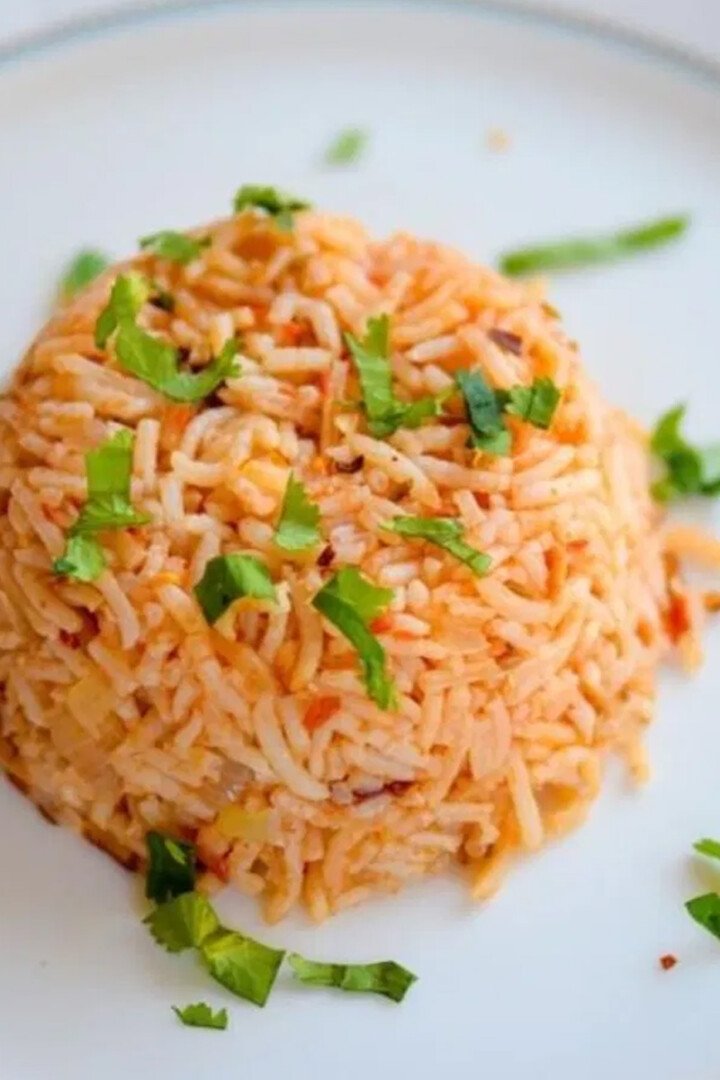
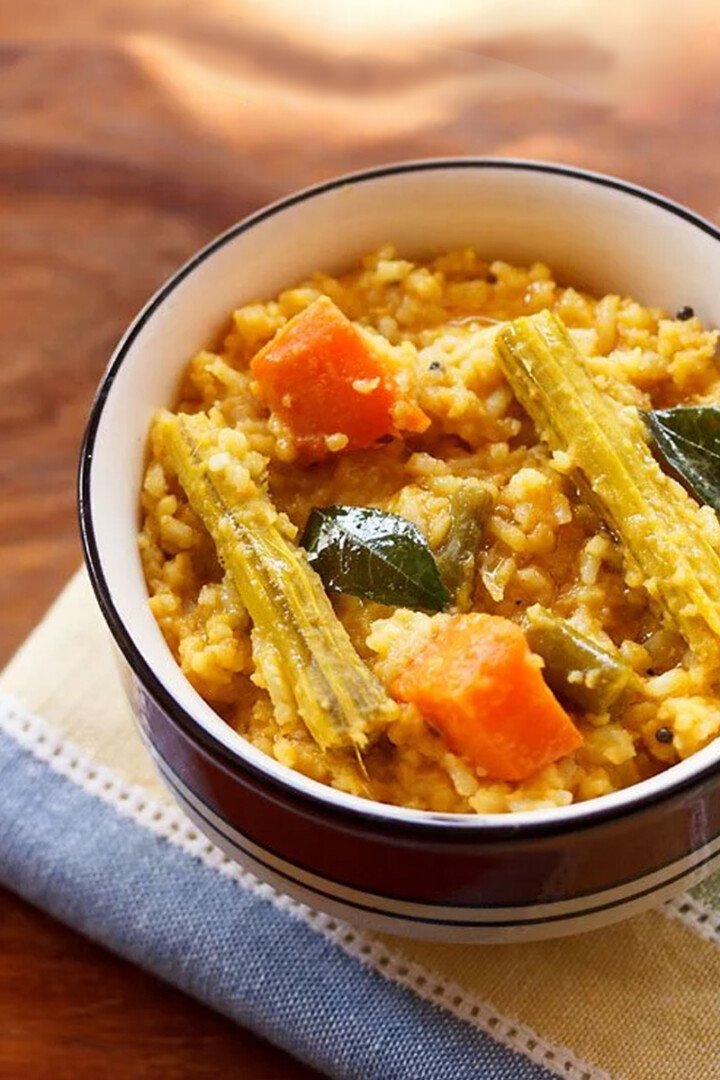
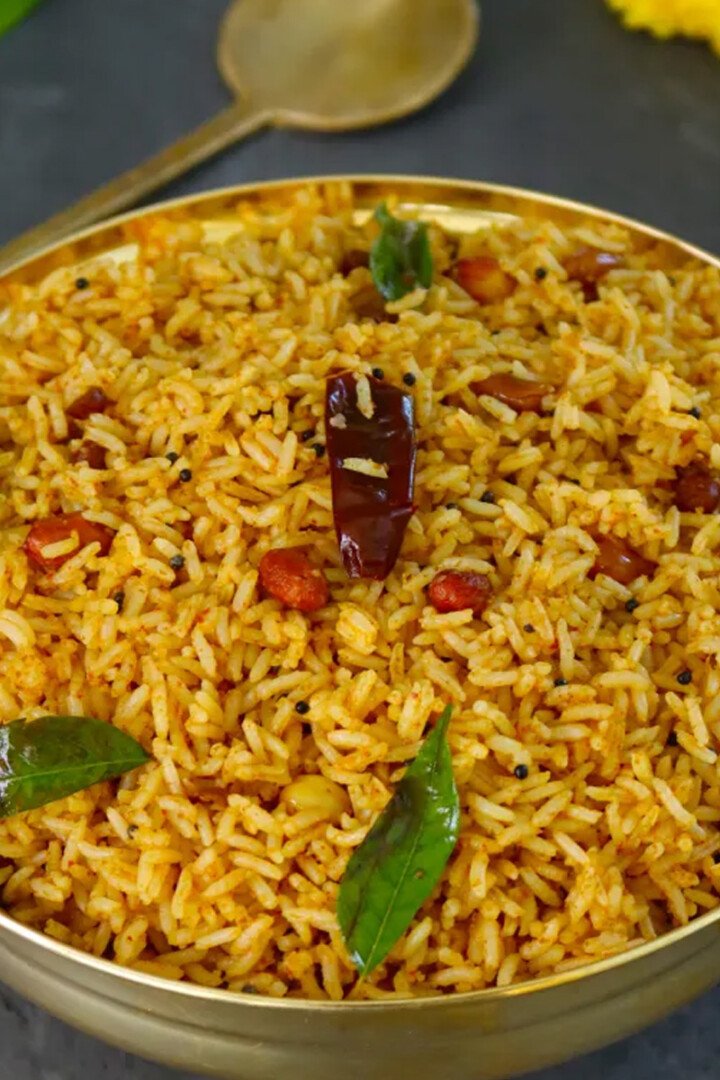
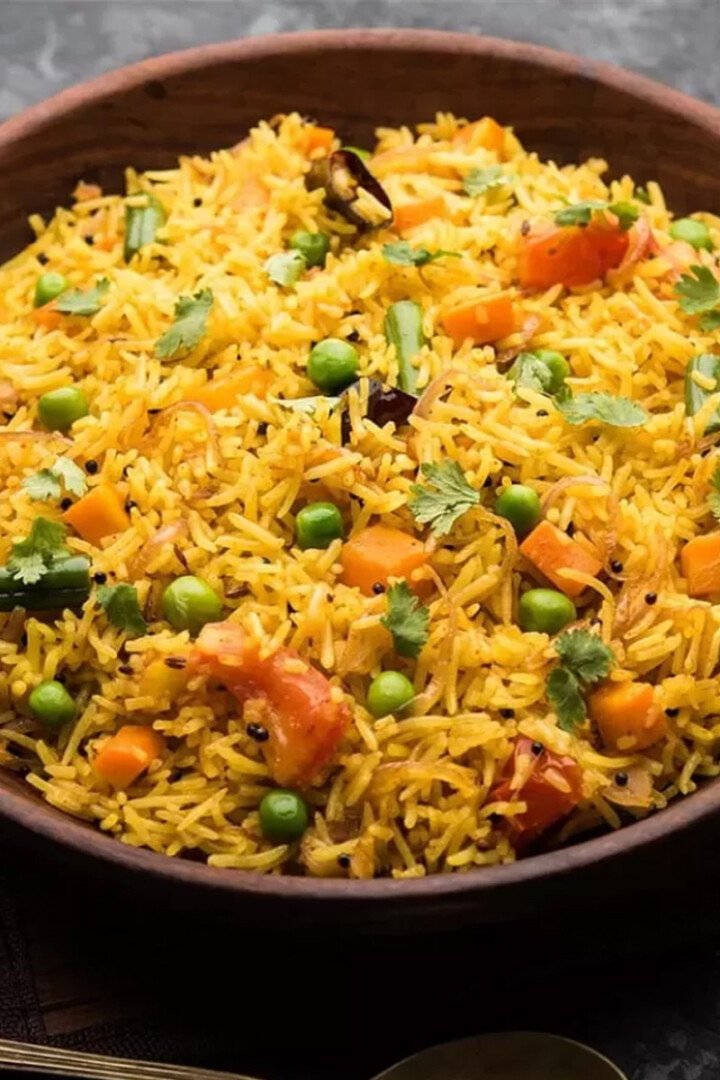
Leave a Reply